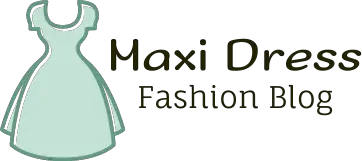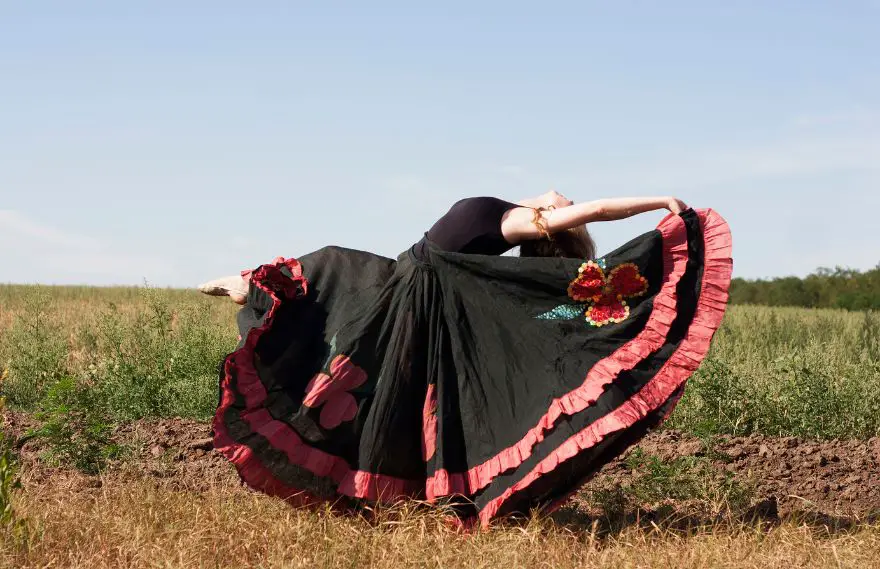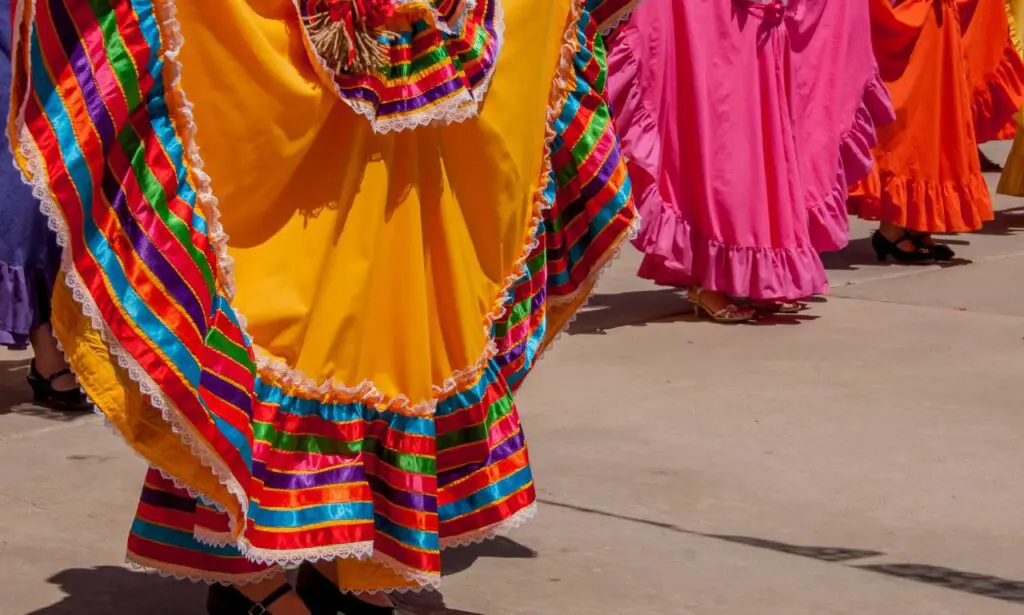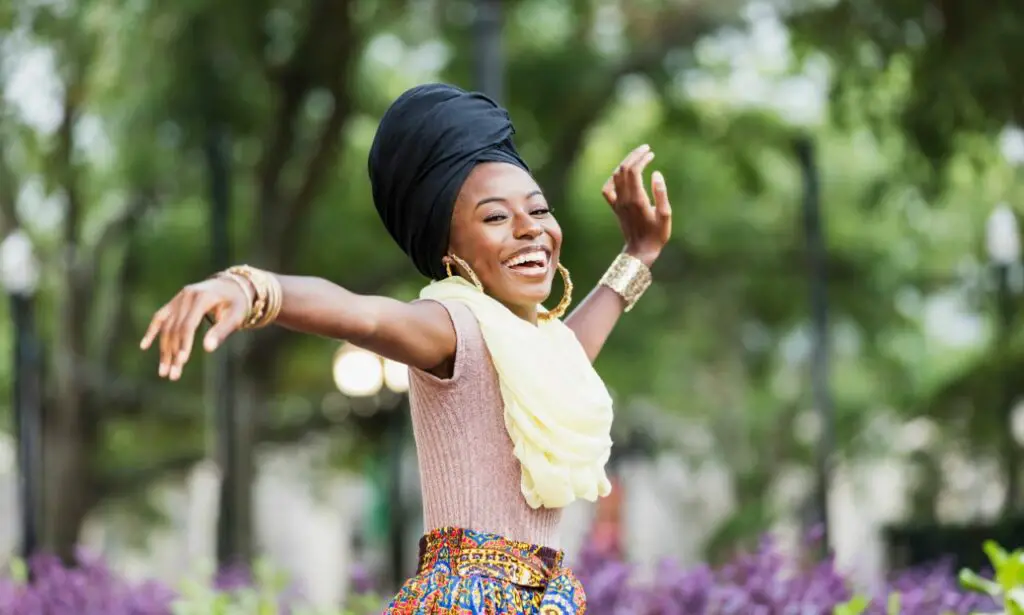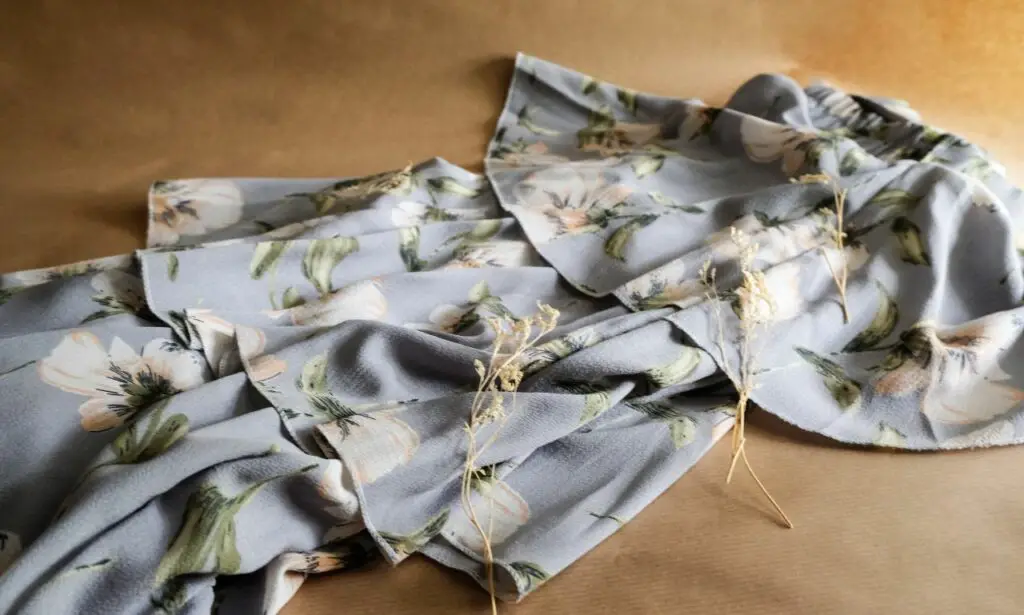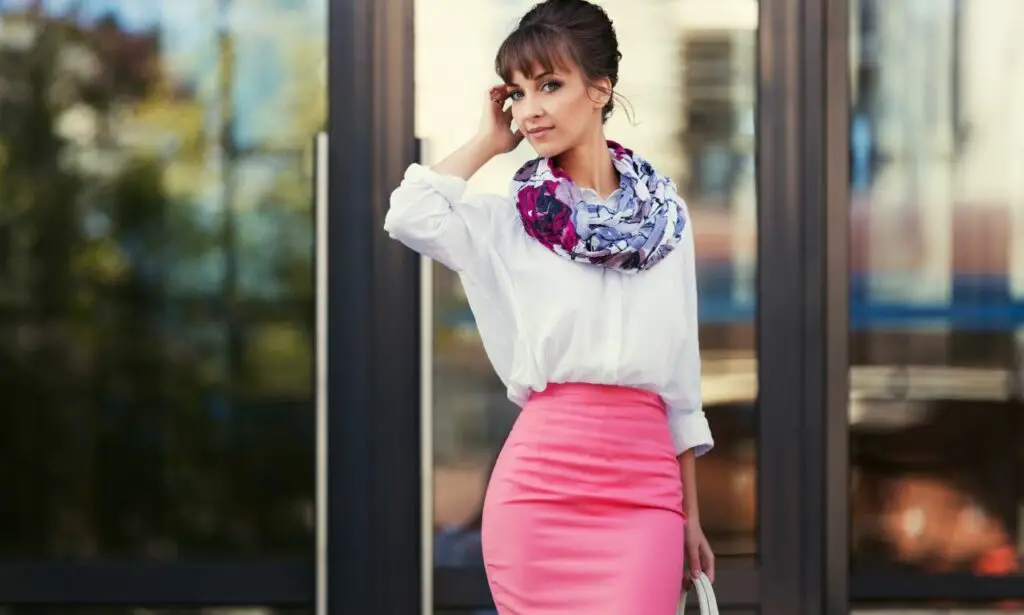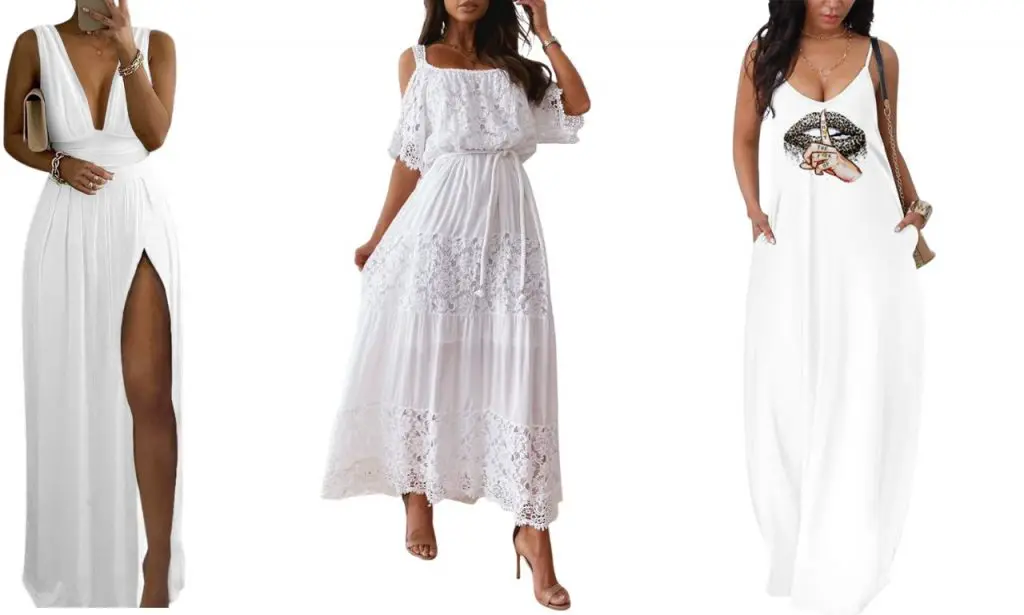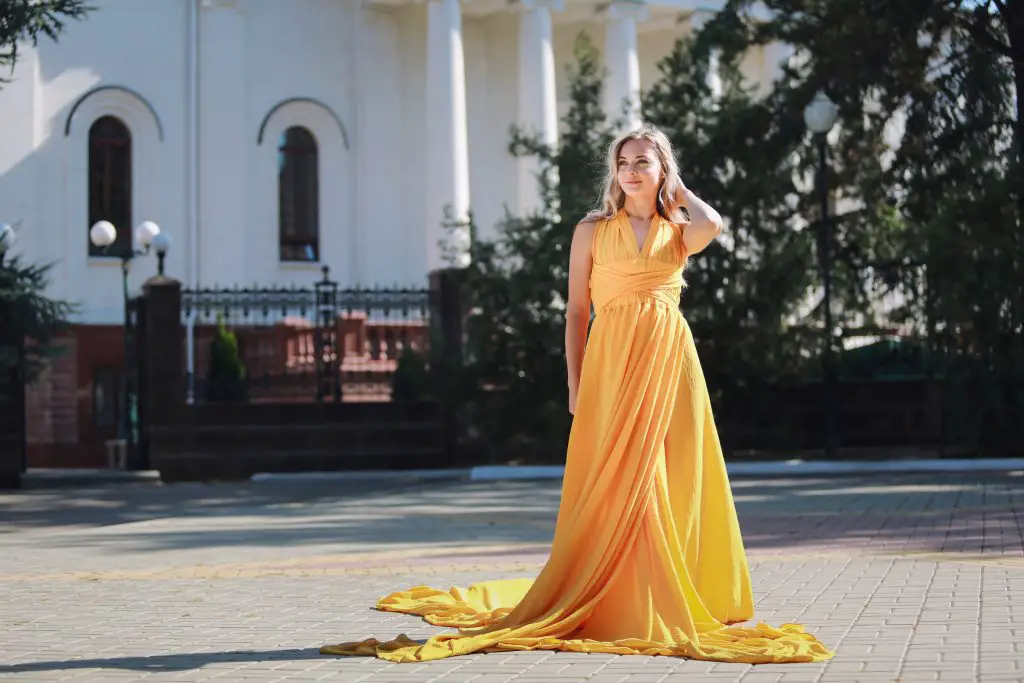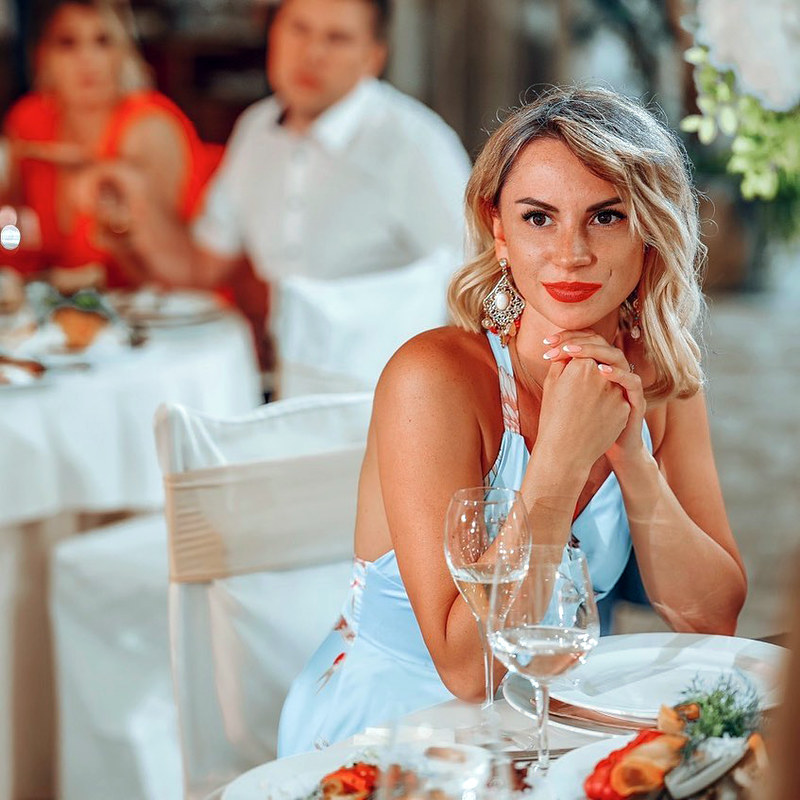Maxi skirts are a fashion staple because they work for women of all body types. Flowy maxi skirts are especially popular due to their superior comfort and interesting movements. You will certainly turn some heads (and take some gorgeous pics) in a flowy maxi skirt. While many petite women may feel intimidated by a flowy maxi skirt, it can be a really good option if structured and styled correctly.
So how can you make maxi skirts more flowy?
Choose The Right Fabric
Different fabric types have different weights and drape, affecting the final look of a garment. Fabric weight is, as the name suggests, how heavy a piece of fabric feels, and it will affect its thickness, warmth, durability, and movement. Fabric drape refers to how it hangs on the body. Lighter fabrics usually have more drape, while heavier fabrics have little to no drape.
So for your flowy maxi skirt, you need a light fabric with a high drape, like silk, satin, viscose, and chiffon. These will give you plenty of that graceful movement characteristic of a flowy skirt. Fabrics with a medium drape like jersey knits, polyester, and cotton, can still create a flowy maxi skirt. They may have a little less movement than the lighter fabrics, but they come with extra warmth for colder months.
Choose The Right Cut
Skirts will lay differently on your body and move differently based on their cut. For instance, a pencil skirt fits snugly around the body, but an A-line skirt is much looser. To achieve that flowy movement, there are several maxi skirt cuts you could choose from, such as:
1. Circular
Circular skirts have curved hems, with a part of the skirt falling on the bias. They were popular in the 1950s due to their beautiful movement when dancing. There are four kinds of circular skirts, depending on how much fabric you use. These include quarter, half, three-quarter, and full, which look and move differently. For instance, a quarter-circle skirt has no folds and looks more like an A-line skirt, while a full circle skirt will have many folds along its hemline.
2. Pleated
Pleated skirts have vertical pleats that start from the waistline or above or below the hip level. The two main types of pleats for skirts are box pleats and knife pleats, which can be placed at the waistline or hip level to create a full and flowy maxi skirt.
3. Tiered
Tiered skirts have overlapping layers of fabrics that give the skirt a layered, ruffled appearance. In addition, these layers give the skirt a lot of movement, especially when made using lightweight fabrics.
Also read: How to Style A Tiered Maxi Dress
4. Gathered
Gathered skirts are some of the simplest to make. They are cut from a rectangular piece of fabric that is then gathered at the waist. The length of the rectangle determines the length of your skirt, and the more gathers you have, the fuller your skirt will be and the movement it will have. Also, since the waistband is sewn to the skirt, it fits tightly to the body and stays at the natural waistline, unlike other skirts that are worn below the natural waistline.
5. Handkerchief
Handkerchief skirts are a more feminine version of the circle skirt. Rather than a straight hem, you have an uneven hem that, with the right fabric, creates more flow and movement for your handkerchief skirt.
6. Godet
Godets are thin panels of fabric shaped like triangles that are attached to a circle skirt to give garment movement. Godet skirts are similar to A-line skirts and were popularized in the 1960s by swing dancers because of their flow and movement.
7. Yoke
A yoke is a piece of fabric that offers a base where the loser fabric will be gathered. A yoke skirt looks like a drop waist accentuating the hips and midriff. The attached fabric can then be as voluminous and flowy as you like.
Customize
One sure way to have your maxi skirt as flowy as you would like is to have it custom-made. Granted, this is a more expensive option than buying something off the rack, but you have a better shot at getting exactly what you want. Explaining your vision to a trusted seamstress will help to choose the fabric and design that will create your perfect flowy maxi skirt.
Of course, if you have some sewing skills, you could create your maxi skirt. Plenty of online tutorials and articles show you how to measure and cut the different patterns for different styles of flowy maxi skirts. You could start with simpler patterns like gathered skirts and work your way up to more challenging ones.
Flowy maxi skirts are a fashion asset every woman should have in their closet. They are comfortable and fully cover the legs to keep you warm and your hairy legs hidden. There are so many styles of flowy maxi skirts that women of any body type will certainly find one that suits them. They have a graceful movement that adds that extra femininity to your whole look as you move through your day.
So whether you choose to buy one, have it made, or make it yourself, you will be doing yourself a huge favor to invest in a flowy maxi skirt.
Yes! Flowy maxi skirts work perfectly with petite body types. In fact, they work better than fitted maxi skirts which can make you look shorter. So if you are petite, your best bet is a beautifully styled, flowy maxi skirt.
However, make sure your hem is slightly above your heels and not above your ankles. And if you want, you could add a slit that will create the illusion of longer legs as you walk.
Since you already have a voluminous bottom, it is best to contrast that with a fitted top. Fitted tank tops or camisoles tucked into the skirt are a good option. Fitted crop tops are also good options to create some elongation, especially for petite ladies. In colder seasons, a fitted or tucked-in turtleneck can work well with your flowy maxi skirt.
